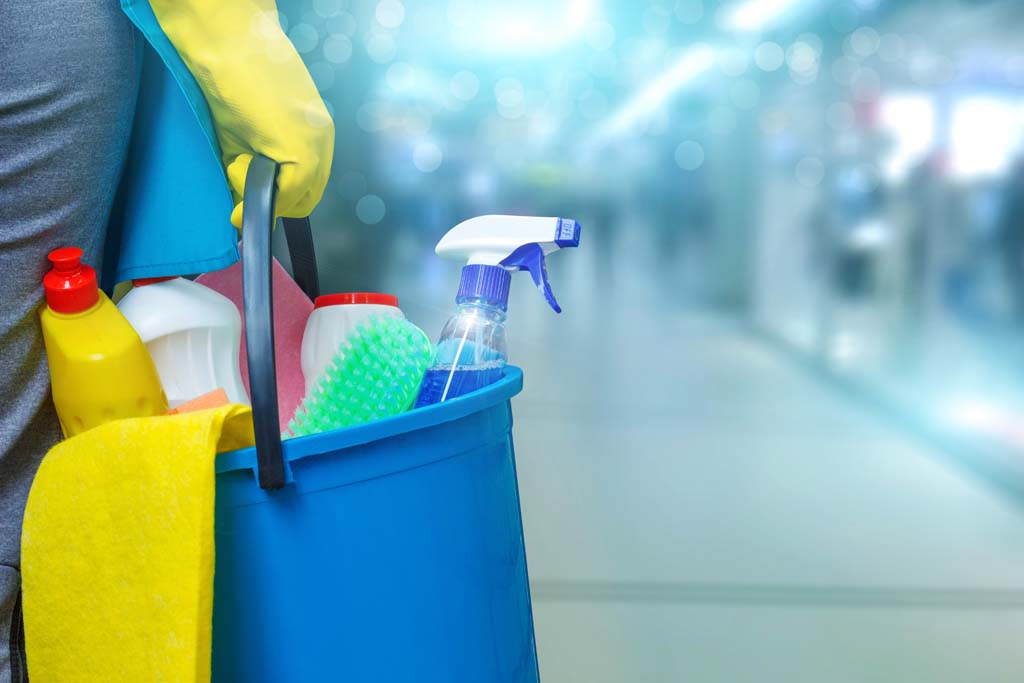Master Everyday Cleaning Techniques: Exactly How to Appropriately Scrub the Surfaces and Preserve a Clutter-Free Home
Master Everyday Cleaning Techniques: Exactly How to Appropriately Scrub the Surfaces and Preserve a Clutter-Free Home
Blog Article
Understanding the Need for Extensively Decontaminating and Sterilizing Frequently Touched Surface Areas in High-Traffic Locations
In the world of public health and security, the careful disinfection and sanitization of frequently touched surface areas in high-traffic locations stand as critical actions in stopping the spread of dangerous virus. By exploring the numerous aspects of surface disinfection, from the dangers connected with ignoring cleansing protocols to the effective methods that can be employed, a clearer understanding emerges of the crucial duty these practices play in safeguarding public health.
Value of Surface Sanitation
Highlighting the extensive sanitation of high-traffic surfaces is vital in preserving a hygienic environment and protecting against the spread of unsafe pathogens. High-touch surfaces such as door handles, light buttons, elevator switches, and counter tops function as reproducing grounds for viruses and microorganisms. Regular disinfection of these surfaces is crucial to decrease the danger of contamination and transmission of diseases.
By implementing a robust sanitation protocol, institutions and organizations can develop a much safer setting for consumers, visitors, and staff members. Proper surface area disinfection not just minimizes the spread of transmittable diseases yet additionally instills self-confidence in the tidiness and safety of the properties. This aggressive technique demonstrates a dedication to health and wellness, which is specifically vital in high-traffic areas where the chance of exposure to microorganisms is increased.
In addition, surface sanitation plays a vital function in overall infection control approaches. Combined with hand health practices, wearing masks, and keeping physical distancing, complete sanitation of high-touch surfaces develops a detailed defense versus the transmission of damaging microbes. Prioritizing surface disinfection is a vital element of an all natural strategy to health and safety in common areas.
Risks of Disregarding Cleaning Practices
Ignoring thorough sanitation of high-traffic surface areas dramatically heightens the risk of microbial and viral contamination, positioning a severe risk to the health and wellness of individuals often visiting these spaces. Failing to execute appropriate cleaning practices can bring about the accumulation and spread of unsafe pathogens, including germs and infections, on regularly touched surfaces such as doorknobs, hand rails, lift buttons, and kitchen counters.

Furthermore, ignoring the significance of extensive cleansing not just endangers the health of people but likewise threatens initiatives to keep a sanitary and tidy setting. It is vital to recognize the importance of correct sanitation methods in protecting against the spread of infections and safeguarding public health and wellness.
Reliable Disinfection Techniques
To keep optimum cleanliness and lower the risk of contamination on high-traffic surface areas, utilizing reliable disinfection techniques is important. Among one of the most effective and usual disinfection techniques is using chemical anti-bacterials. These items can differ in toughness and make-up, with some targeting certain virus like viruses or microorganisms. It is essential to follow the manufacturer's guidelines for correct dilution, call time, and air flow when using chemical disinfectants to ensure their effectiveness - Everyday cleaning.
One more reliable approach is making use of UV-C light. UV-C light has been revealed to be efficient in killing a large selection of bacteria by interrupting their DNA framework, thus preventing them from duplicating. It is crucial to make use of UV-C light appropriately, ensuring that the proper strength and exposure time are applied to achieve the desired disinfection outcomes.
Additionally, utilizing steam cleaning dig this as a sanitation technique can be very reliable, particularly on surface areas that are heat-resistant. click resources Heavy steam can penetrate permeable surface areas and eliminate bacteria, infections, and other pathogens successfully. When utilizing vapor cleansing, it is essential to ensure that the surface area reaches the required temperature for a sufficient quantity of time to ensure correct sanitation.
Influence On Public Health And Wellness
The maintenance of high criteria of tidiness and sanitation on high-traffic surface areas plays an essential role in safeguarding public wellness. Frequently touched surface areas in areas with high tramp, such as doorknobs, hand rails, lift buttons, and toilet centers, serve as reproducing grounds for damaging virus.
In high-traffic locations like airports, institutions, health centers, and public transport systems, the effect of strenuous disinfection steps can not be downplayed. Focusing on the sanitization of often touched surface areas is an aggressive approach to promoting public health and wellness and improving the safety of individuals in common rooms.
Implementing Normal Cleaning Procedures
Promptly instituting and sticking to a consistent schedule of cleaning methods is paramount for maintaining the tidiness and safety of high-traffic surfaces. Routine cleaning methods are necessary in avoiding the build-up of germs and virus on frequently touched surfaces, especially in areas with high foot website traffic. By applying a methodical technique to cleaning, companies can efficiently decrease the danger of condition transmission and create a much healthier atmosphere for staff members, customers, and the general public.
To develop redirected here a reliable cleaning timetable, it is important to determine high-traffic areas that require regular focus. These areas might include doorknobs, hand rails, lift switches, bathroom facilities, and shared tools. Executing a routine cleaning routine that targets these surfaces several times a day can significantly lower the spread of damaging bacteria and viruses.
In addition, making use of suitable cleaning agents and disinfectants is essential to ensuring that surfaces are thoroughly disinfected. Normal training of cleaning team on appropriate cleaning strategies and the importance of adherence to the cleansing routine is additionally important in preserving a sanitary atmosphere. By prioritizing consistent cleansing methods, companies can promote the health and health of individuals who engage with these high-traffic surface areas.

Final Thought
In conclusion, it is vital to prioritize comprehensive sanitation and sanitization of frequently touched surfaces in high-traffic locations to prevent the spread of hazardous virus and maintain public health. It is important to identify the value of preserving tidy surface areas in high-traffic areas to ensure the wellness of the neighborhood.
In the realm of public wellness and safety, the meticulous disinfection and sanitization of often touched surfaces in high-traffic locations stand as vital steps in stopping the spread of unsafe virus. By discovering the various facets of surface sanitation, from the risks connected with disregarding cleaning methods to the efficient approaches that can be utilized, a clearer understanding emerges of the important function these techniques play in guarding public health.Additionally, utilizing vapor cleansing as a disinfection approach can be highly reliable, particularly on surfaces that are heat-resistant. When making use of steam cleaning, it is important to guarantee that the surface area gets to the called for temperature for an adequate amount of time to assure appropriate sanitation.
In final thought, it is critical to prioritize detailed sanitation and sanitization of regularly touched surfaces in high-traffic areas to stop the spread of hazardous pathogens and preserve public health and wellness.
Report this page